Wondering if there’s a difference between pork shoulder and pork butt? These cuts are often mistaken for one another, and their deceptive names only add to the confusion. Let’s see what sets them apart and what are the best ways to use them!
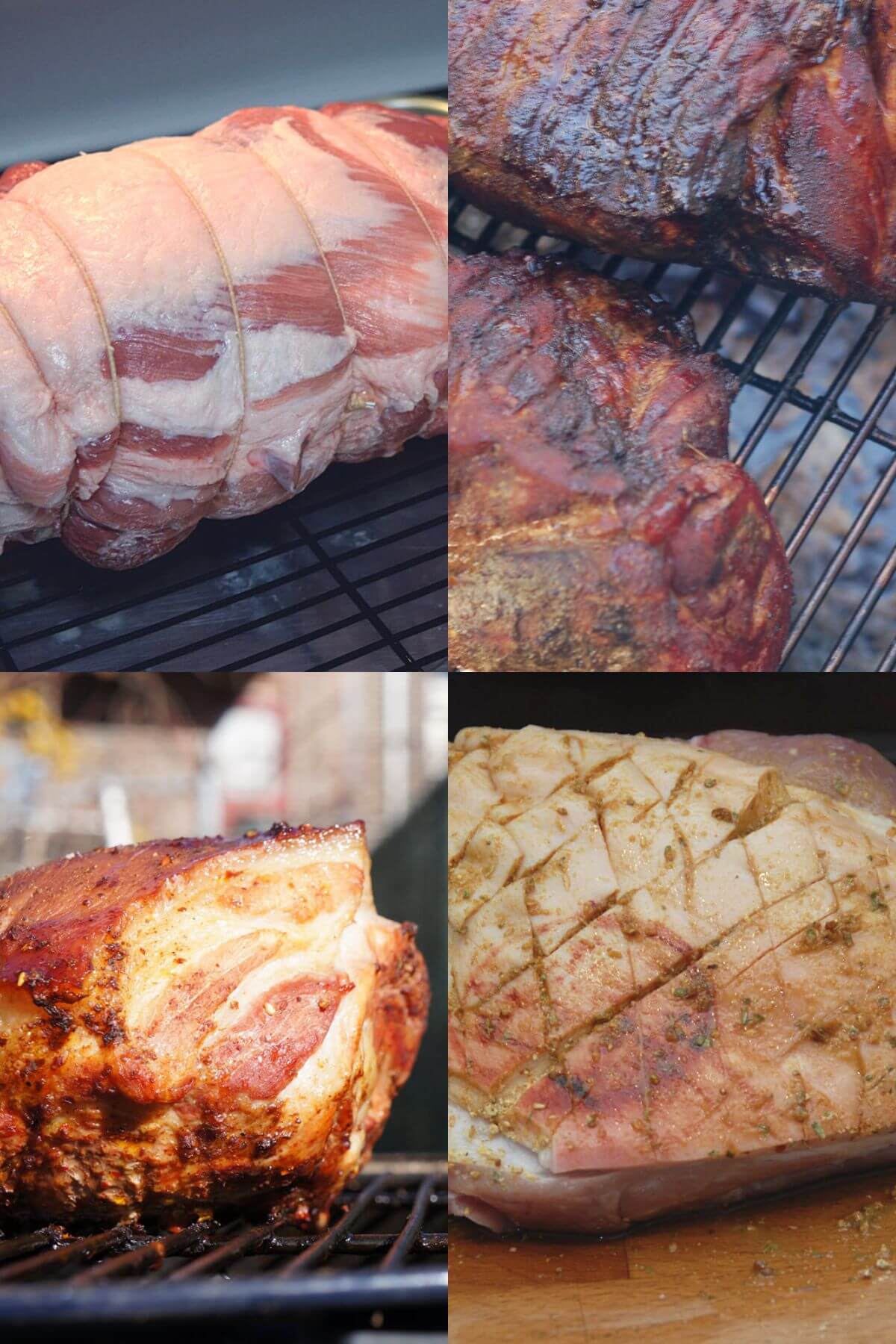
Their labels are not exactly suggestive of their origin. Pork shoulder is just a portion of the actual shoulder of the animal and pork butt doesn’t come from the swine’s rear.
Feeling puzzled?
The guide below will settle the pork shoulder vs. pork butt dispute and also includes information on the type of recipes each cut is best used for.
🆚Side By Side Comparison
| Attribute | Pork Shoulder | Pork Butt |
|---|---|---|
| Source of Cut | Lower end of the shoulder, tapered, triangular shape, often sold with skin on. | Upper section of the front shoulder, uniform, rectangular shape, more fat and marbling. |
| Fat and Marbling | Balanced fat content with subtle marbling. | Richer in fat and marbling. |
| Shape | Triangular shape with uneven thickness. | Rectangular, uniform shape. |
| Size | 12-18 pounds, yields 40-50 servings. | 6-8 pounds, serves around 12-16 people. |
| Taste | Deeper, richer flavor than lean cuts. | More intense flavor due to higher fat content. |
| Texture | Slightly stringier and less tender. | Softer and juicier due to high fat and marbling content. |
| Nutrition | Leaner, lower in calories and fat. | Higher in calories and fat, more forgiving in cooking. |
| Cost | More economical per pound, larger cut. | Slightly higher price per pound, smaller cut. |
| Availability | Staple in most supermarkets and butcher shops. | Commonly available, occasional shortages. |
| Best Cooking Methods | Roasting, braising, stewing, slow smoking, grilling. | Roasting, braising, stewing, slow smoking, grilling, best option for pulled pork. |
🐷What Is Pork Shoulder?
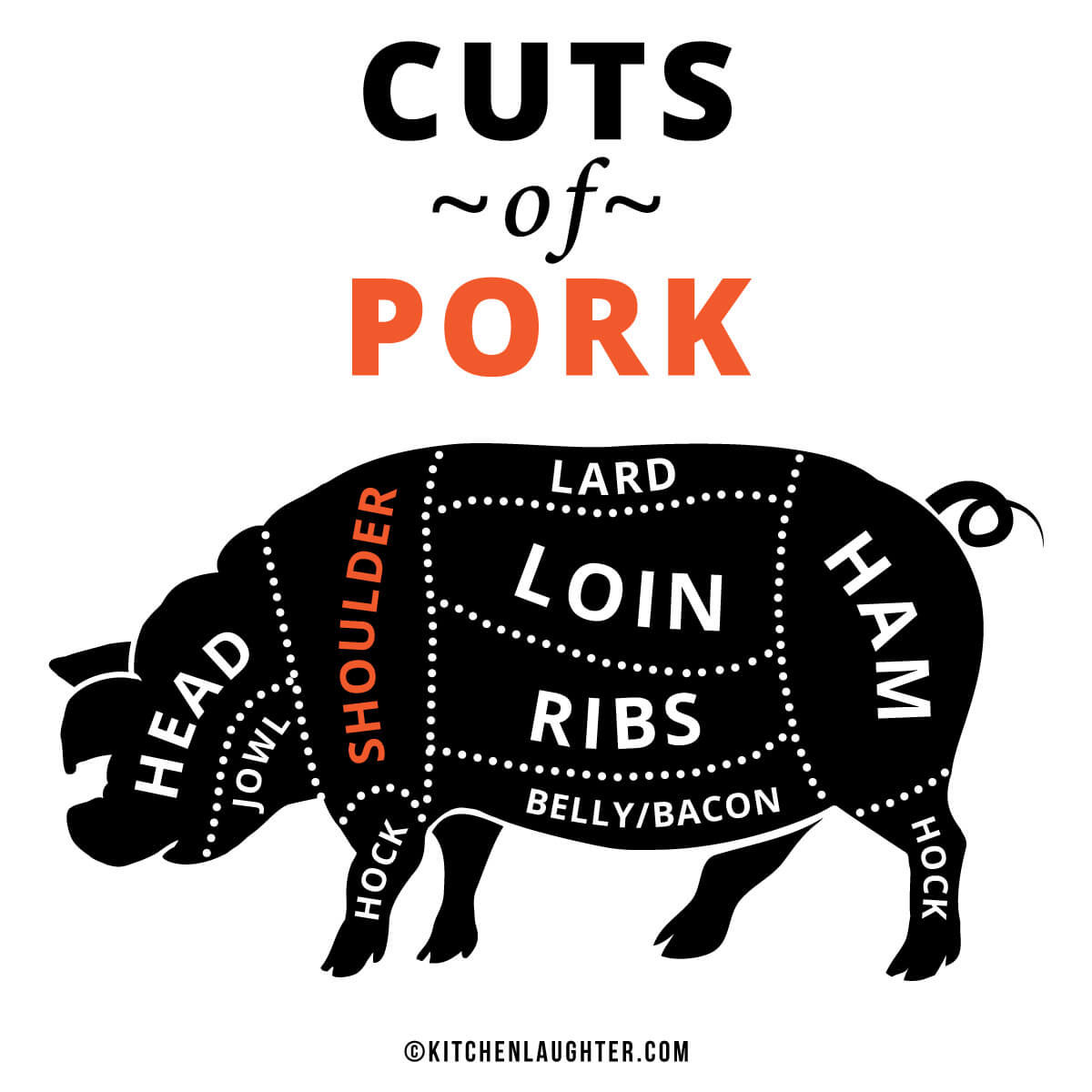
Pork shoulder, comes from the lower end of the shoulder and has a tapered, triangular shape. It’s often sold with the skin on.
The shoulder is a hardworking area with lots of connective tissue, and that’s why the meaty parts of the pork shoulder cut are tough. It also has a reasonable amount of fat with subtle marbling in some areas.

Flavor-wise, it has a deeper, richer flavor than lean cuts such as pork chops and pork loin.
🍖What Is Pork Butt?
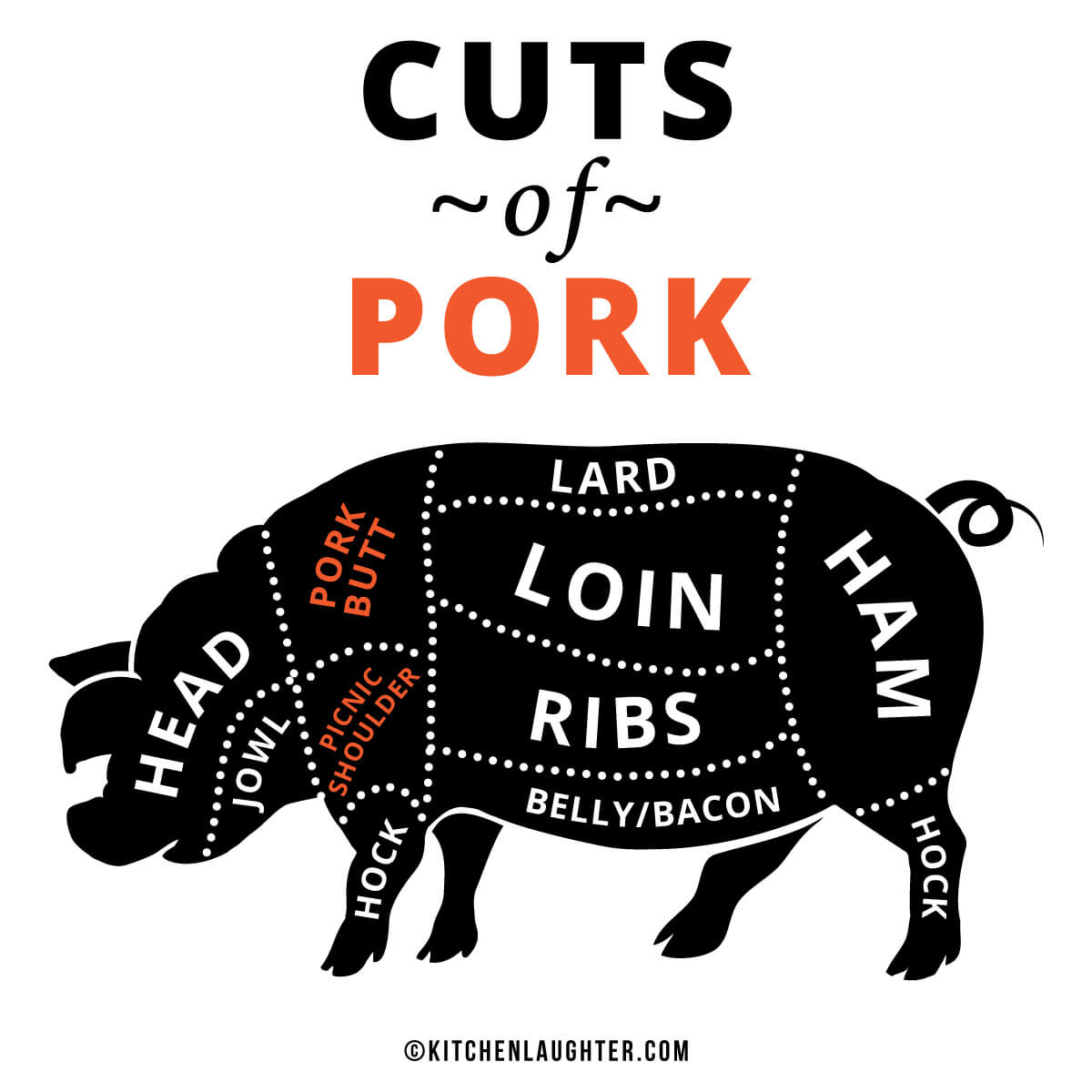
As I already mentioned, pork butt comes from nowhere near the rear of the pig. In fact, it’s the upper section of the pig’s front shoulder and has a rather uniform, rectangular shape. Also known as a Boston butt, it’s available as a boneless and bone-in cut (the bone will add flavor but also lengthen the cooking time so choose the one that works best for you).
The pork shoulder is made of two sub-primal cuts: the pork butt, or Boston butt, and the picnic shoulder. So, if you purchase a whole pork shoulder you will get both.
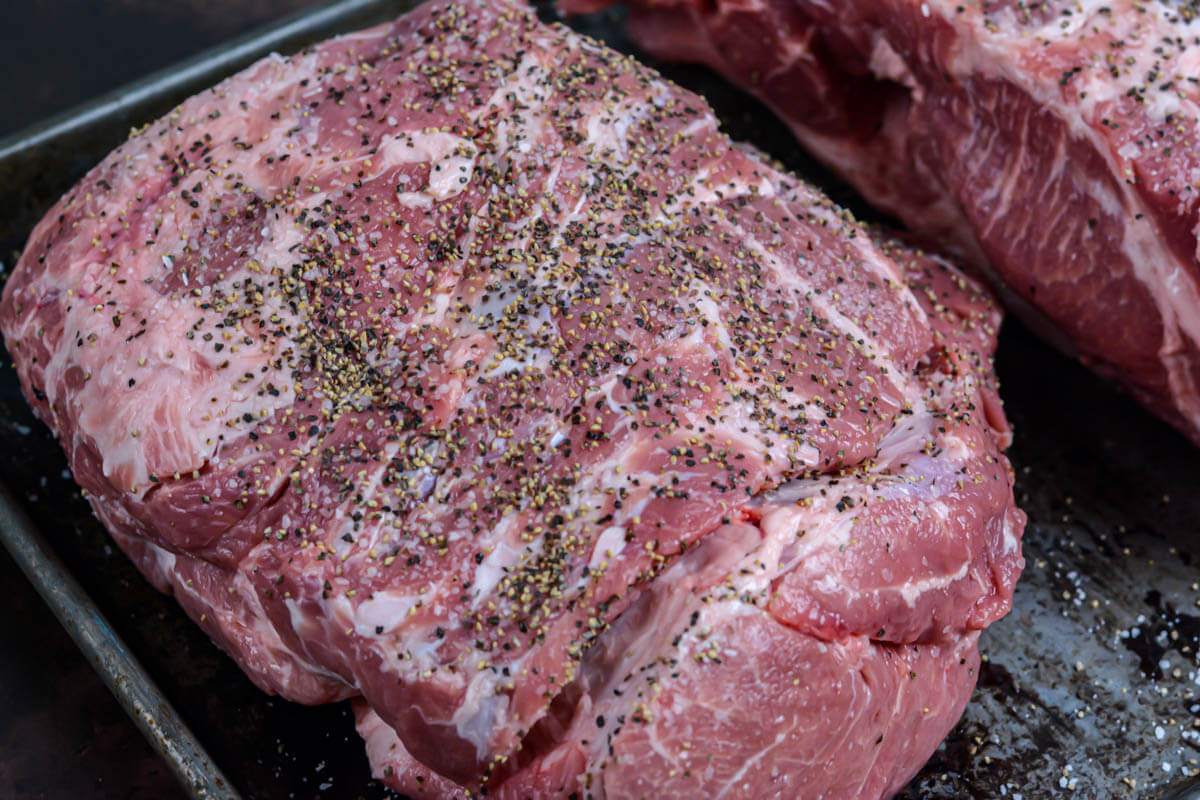
Pork butt, also called “Boston butt” has more fat and marbling than the picnic shoulder, and is often sold with the fat cap intact.
It has some connective tissue, although the high-fat content makes this type of meat less susceptible to drying.
🥩Fat And Marbling
Pork shoulder comes from the lower part of the front shoulder, and that’s an area that works harder than most, so it has a balanced fat content with subtle marbling.
Pork butt is richer in fat and marbling and both cuts also have plenty of connective tissue.
🔎Shape
The pig’s shoulder becomes narrower as it gets closer to the animal’s hooves, which is why the pork shoulder cut has a triangular shape with uneven thickness. In most cases, you’ll find this cut sold with the fat cap still on.
Pork butt comes from above the shoulder blades and has a rectangular, uniform shape. It’s usually sold with the skin off, with or without the bone, but the top fat layer is kept intact.
📏Size
For large cuts like pork butt and shoulder, it is very important to understand the size of the meat so you can plan its use accordingly.
⚡Pork shoulder – A whole pork shoulder can weigh anywhere from 12 to 18 pounds. It is a massive cut that can yield 40-50 servings or even more depending on how you use it and the appetite of your guests.
⚡Pork butt – The Boston butt is smaller than an entire pork shoulder and weighs 6-8 pounds. It can serve around 12-16 people so it’s great for family gatherings and small parties. If you think that’s not much consider the rich marbling and fat cap of this cut.
While they will add flavor and keep the meat moist as it cooks, they will render during cooking and produce a smaller yield per pound of raw meat compared to the whole pork shoulder.
👨🏼🍳Taste
Pork butt (Boston butt) is a fattier cut compared to pork shoulder (picnic roast) so it will have a more intense flavor.
Of course, the cooking method, spices, herbs, and other ingredients you use when cooking will also affect their final flavor.
Despite the lower fat content of the pork shoulder, if cooked properly, it will turn out incredibly delicious!
🔪Texture
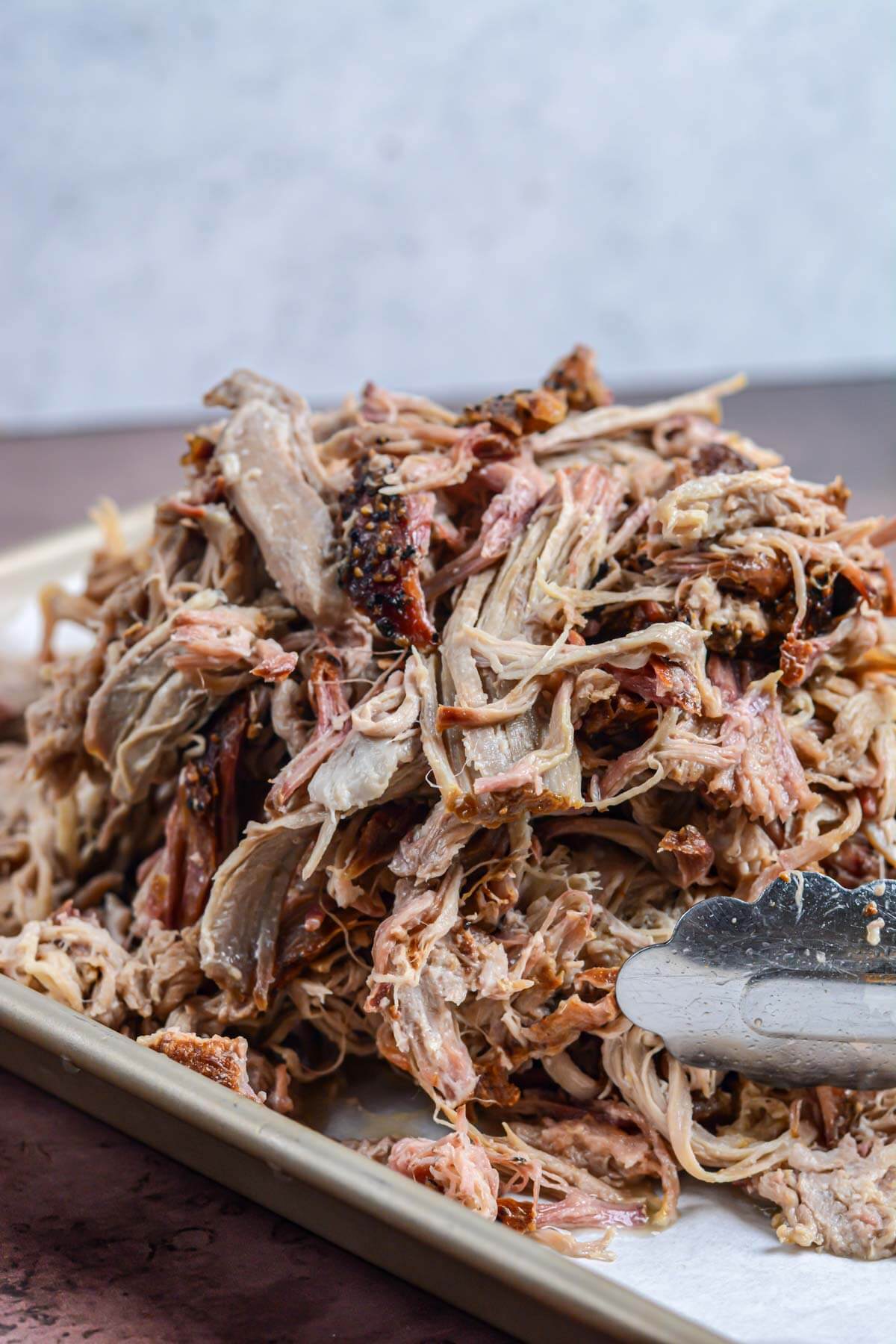
The pork shoulder is a hardworking area with lots of muscle meat. Compared to pork butt, it’s slightly stringier and less tender. But a good long, low-temperature smoke will make it turn super tender! Check out the photos of the shredded pork shoulder above.
Because of the high fat and marbling content, pork butt meat is softer and juicier.
🥙Nutrition
| Nutrient | Pork Shoulder (Raw, 100g) | Pork Butt (Raw, 100g) |
|---|---|---|
| Calories | 216 Cal | 253 Cal |
| Protein | 18.5g | 17.1g |
| Total Fat | 14.6g | 19.2g |
| Carbohydrates | 0.2g | 0.1g |
| Potassium | 320mg | 300mg |
| Sodium | 53mg | 54mg |
Pork shoulder is slightly leaner than pork butt. That is because it contains both the pork butt and the picnic roast, with the latter being lower in fat.
100 grams of raw pork butt contain about 253 calories and 19.2 grams of fat. The average calorie count for 100 grams of raw pork shoulder is around 216, with a lower fat content of approximately 14.6 grams.
Of course, protein-wise, pork shoulder is the winner. If you’re on a diet with reduced fat and caloric intake, pork shoulder is the better choice.
On the other hand, pork butt’s higher fat content makes it more forgiving for all cooking methods ensuring the meat is less prone to drying out.
🏷️Cost
Both pork shoulder and pork butt are affordable cuts of meat and they’re perfect as a budget-friendly option for feeding a crowd.
A whole pork shoulder will always be larger than a pork butt and for that reason, the price is higher per cut. However, when looking at the cost per pound, pork shoulder is the more economical option.
In all honesty, the price difference is minimal. It’s a good idea to calculate the number of servings and if you want any leftovers before deciding which one to buy.
Tip: If you have a Costco nearby, they always have a two-pack with a butt and shoulder for very reasonable prices. They always seem to be very fresh and we use them all the time! (When my wife lets me wander Costco unsupervised, that is!)
🛒Availability
Pork butt and pork shoulder are generally easy to find, with some regional and store-related variations.
Pork shoulder is a staple in most supermarkets, grocery stores, and butcher shops. It is both affordable and versatile which contributes to its popularity.
Pork butt, or Boston butt, is also a budget-friendly cut most stores carry although you might experience occasional shortages. It is the commonly used cut for pulled pork recipes, due to its higher fat content, and smaller, easier-to-manage size.
If you’re a budget-conscious shopper, pork shoulder is the slightly more available and cheaper choice.
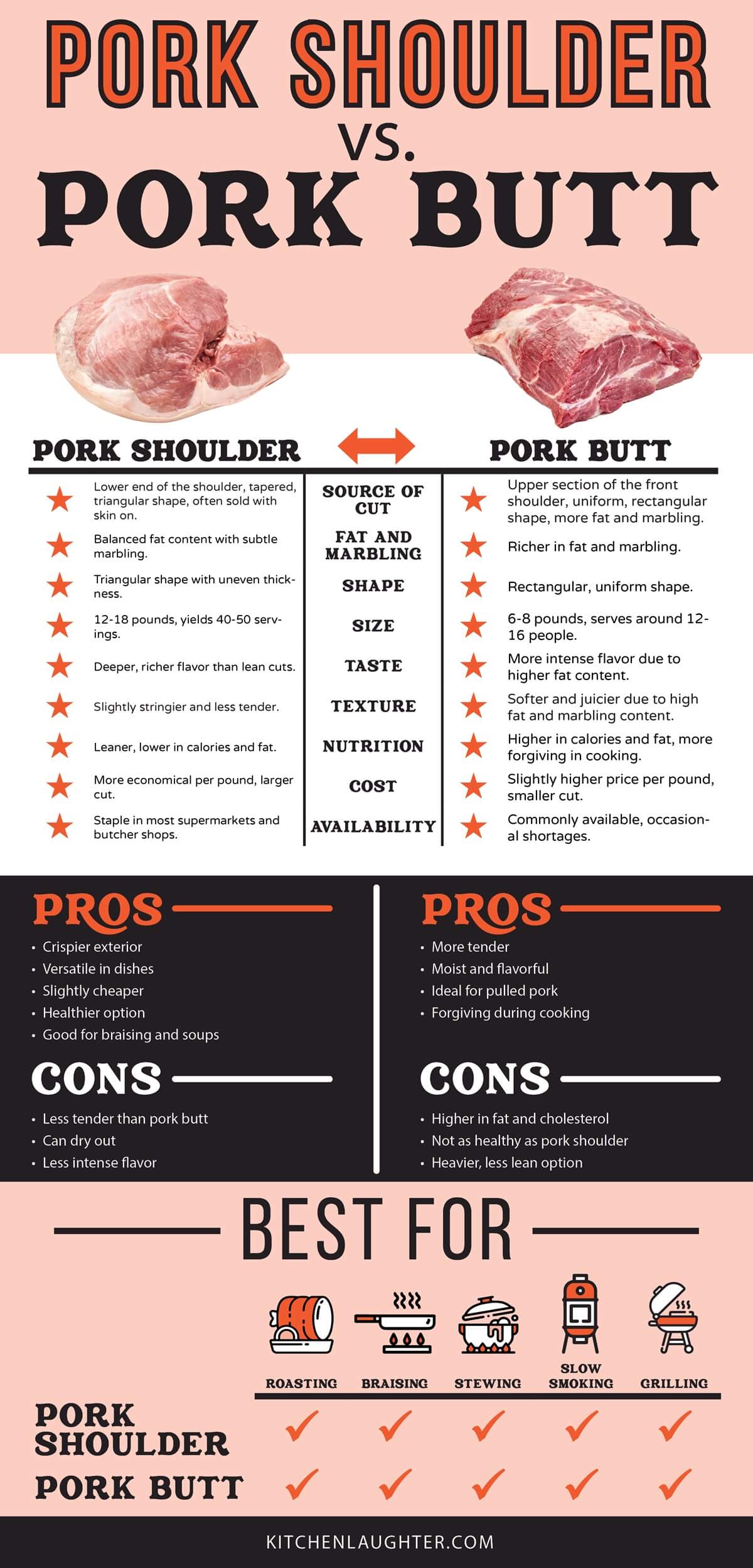
🥘Best Cooking Methods
Pork Shoulder
If there’s one thing pork shoulder and pork butt have in common, is they are well suited for low and slow cooking methods.
They both have plenty of connective tissue that needs to break down for the meat to become tender.
Here are the best ways to cook and use pork shoulder:
- Any slow cooking method: roasting, braising, stewing, slow smoking, and grilling.
- Any recipe that calls for crispy pork skin.
- Holds its shape and can be sliced whole.
- Can be used for any recipe that calls for pulled pork.
- Raw pork shoulder can be cut into cubes and used for soups, stews, and chili.
♨️How To Grill Pork Shoulder
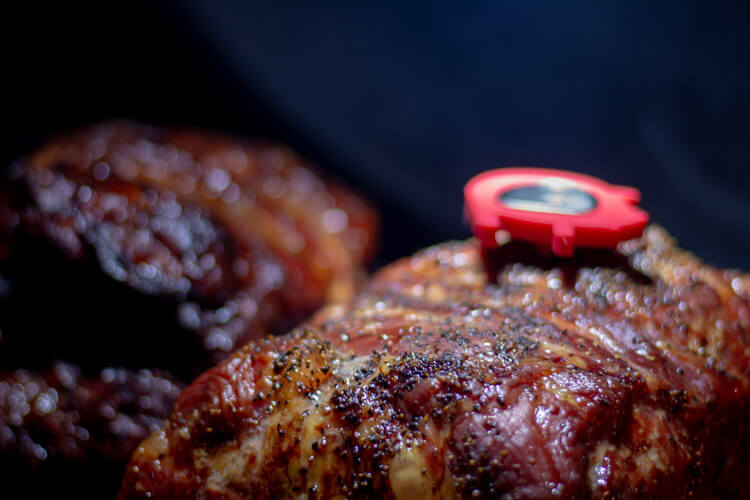
Grilling pork shoulder brings out a fantastic smoky flavor and a crispy exterior, making it a great choice for a summer BBQ. Here’s how to grill pork shoulder effectively:
- Start by applying a rub of your choice to the pork shoulder. A mix of salt, pepper, garlic powder, and paprika works well. It will also taste great with just salt and pepper. The smoky flavor does a lot! Check out our grilled pork shoulder recipe for all the details.
- Preheat your grill to a medium heat of around 250°F. Set up for indirect grilling to ensure even cooking without burning the exterior.
- Place the pork shoulder in a disposable pan and set it on the grill, away from direct heat. Cover and grill for about 1.5 to 2 hours, or until the internal temperature reaches 190-205°F. This low-and-slow approach allows the fat to render and the meat to become tender and flavorful. You will get the juiciest meat perfect for pulling.
- If you are looking for a texture that is good for slicing, then remove it when the shoulder reaches 170°F internally.
- Once done, let the pork shoulder rest for about 20 minutes before slicing or pulling. This allows the juices to redistribute, making the meat moist and tender.
Pork Butt
Pork butt and pork shoulder are often used to make pulled pork.
The second one is better suited for pulled meat because of the high fat content and pronounced marbling, which results in a more intense flavor.
When cooked low and slow, the fat and connective tissues will have enough time to break down. The result? Tender, flavorful, and easy-to-shred meat.
Here are the best ways to use pork butt:
- Best suited for making pulled pork, and recipes that use it. Don’t forget the Pulled Pork Rub when making it’s a game changer!
- Any slow cooking method: roasting, braising, stewing, in the slow cooker, slow smoking, and grilling.
- Can be sliced into steaks for grilling.
- Can be cut into strips or cubes for ramen, soups, and stews.
🔥How To Smoke Pork Butt
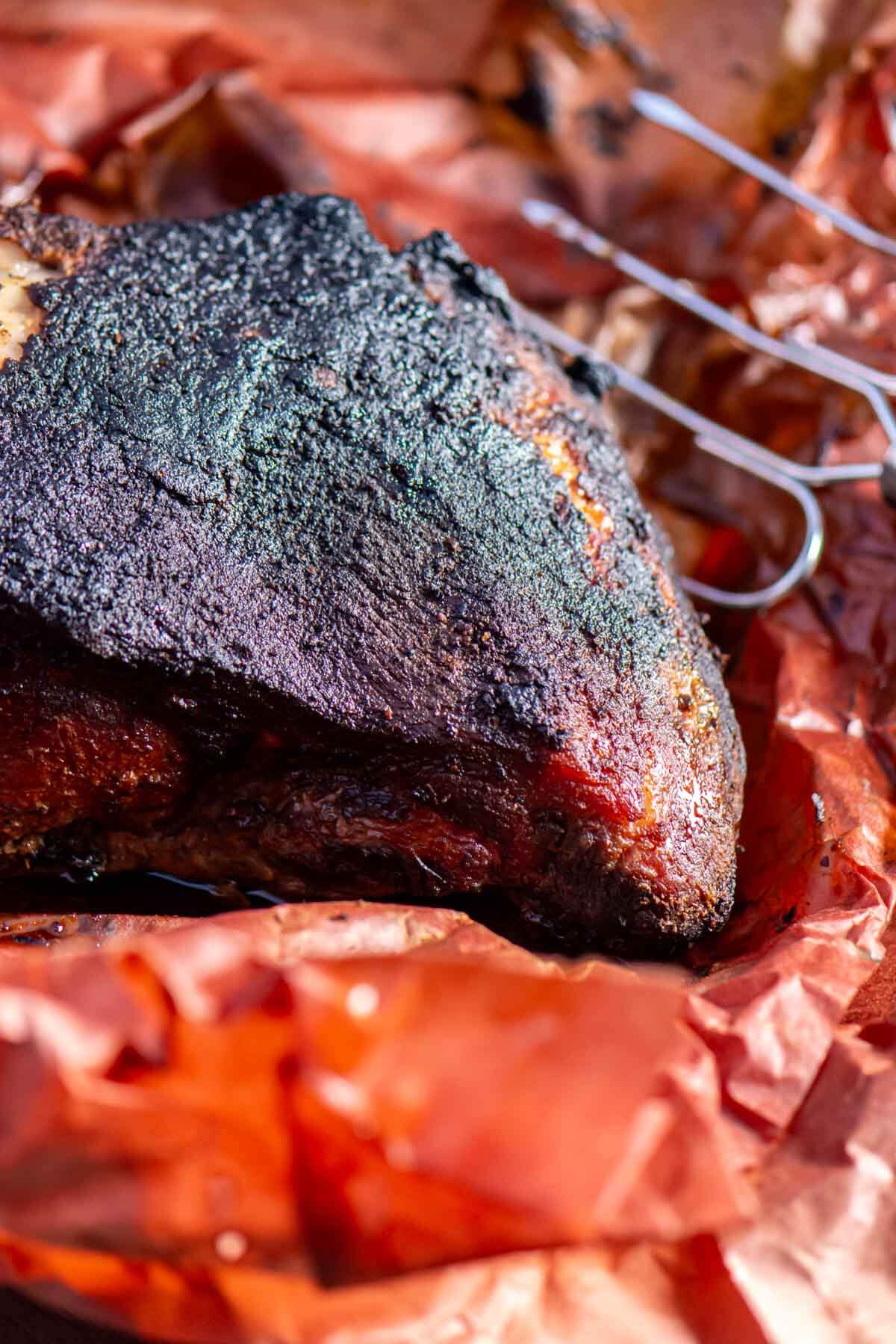
Smoking pork butt is a classic method to achieve tender, flavorful meat perfect for pulled pork. Here’s how to smoke pork butt:
- Apply a generous amount of your favorite BBQ rub to the pork butt. I used a simple, but very tasty homemade BBQ rub. For a step-by-step guide, refer to our smoked pork butt recipe.
- Preheat your smoker to 275°F. This temperature is key for a slow and even cook.
- Place the pork butt in the smoker. Maintain a consistent temperature and smoke the pork butt for about 1 to 1.5 hours per pound. The total cook time can vary, but it generally takes around 6 to 8 hours.
- The pork is done when its internal temperature reaches 195°F to 205°F. At this point, the connective tissue has broken down, and the meat is perfectly tender for pulling. Aim for 170°F internal temperature if you plan to slice the pork butt.
- Let the pork butt rest for at least 30 minutes before shredding or slicing. This rest period allows the juices to settle, ensuring your pulled pork is moist and flavorful.
Other Ways To Make Perfect Pulled Pork
Whether you prefer pork butt or pork shoulder for pulled pork, if you follow the proper steps, it will turn out just right.
Cooked at low temperatures over a long period, any of these cuts can give you tender meat that’s easy to pull apart.
If you never made pulled pork or you think there’s room for improvement, consult our handy printable Pulled Pork Cooking Cheat Sheet.
It’s a free download, and it covers all the details you need to make yummy pull-apart meat regardless of the cut you choose!
👉Reverse Searing – This is great for both cuts if you want to crisp up the outside a little more. All you have to do is monitor the internal temperature of the meat and sear it over high heat when it gets close to the target.
👉Instant Pot – It is very convenient to cook a large cut of meat in the Instant Pot. Start by searing the pork shoulder or butt on all sides using the Instant Pot’s sauté setting.
Add one cup of liquid such as water, broth, or apple juice. It will take about 90 minutes on high pressure for a 3-4 pounds of pork butt or shoulder to cook.
Wait for a natural release for 20 minutes then manually release any remaining pressure.
Rest the pork for 30 minutes before slicing or shredding.
👉Slow Cooker – This amazing appliance will cook the meat low and slow, while you do whatever you please! Season the pork to your liking, add any other ingredients you might like such as onions, garlic, and carrots, and a small amount of liquid like broth or apple cider vinegar.
Cook on low for 8-10 hours until tender and rest for at least 30 minutes before shredding or slicing. This is a great dish to start in the evening and let it cook overnight, or in the morning before you leave for work. By the time you get home, dinner will be ready!
👉Oven – You can get the perfect pork meat for pulling or slicing in the oven too.
For both pork shoulder and butt, preheat it to 325°F. Season the meat to your liking and place it in a roasting pan with the fattier side up.
Cook for 25-30 minutes per pound or until the internal temperature is 170°F for slicing or 190-205°F for pulling.
As usual, rest the pork for at least 30 minutes before serving.
Tip: Add a teaspoon of liquid smoke when you’re using other cooking methods except for smoking and grilling if you want a little bit of smokiness in your meat.
⚖️How to Choose
The two cuts of meat work for many of the same purposes. Cooked low and slow, either meat can be used for tacos, pulled pork, or shredded pork.
Pork shoulder will crisp up more on the exterior if you leave the silver skin on. Pork butt will be soft, tender, and pull perfectly. It also has more flavor and dries out less easily.
All other things being equal, you will find that pork butt is more tender, stays more moist, and has a more intense flavor from all that fat and marbling.
If you want to braise pork, add it to soups or stews, or slice it up for a tender treat from the grill, go with pork butt.
If you are concerned about nutritional value, pork butt has more fat and more cholesterol than pork shoulder, so many consider the shoulder cut to be better for you.
| Pork Shoulder | Pork Butt | |
|---|---|---|
| Pros | Crispier exterior Versatile in dishes Slightly cheaper Healthier option Good for braising and soups | More tender Moist and flavorful Ideal for pulled pork Forgiving during cooking |
| Cons | Less tender than pork butt Can dry out Less intense flavor | Higher in fat and cholesterol Not as healthy as pork shoulder Heavier, less lean option |
To get the best cut of pork, look for bright red or pink meat with clean white fat. Choose the roast with the highest amount of fat marbling and an even fat cap for the best flavor. If the meat has odd coloring, avoid it.
🥪How To Serve Pulled Pork
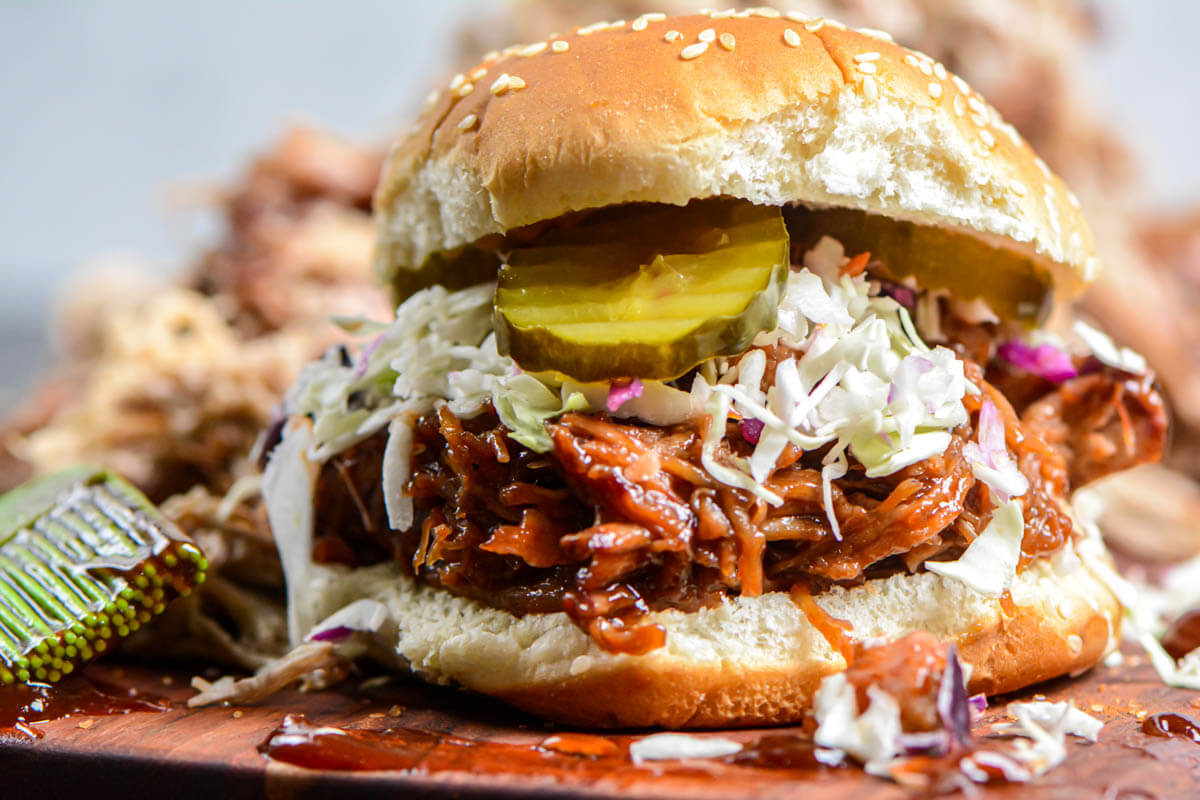
Both pork butt and pork shoulder make excellent pulled pork meat. This is a crowd-pleasing dish you can serve in so many different ways. Here are some suggestions to make your pulled pork meal unforgettable:
⭐Portion planning – When choosing between pork shoulder vs pork butt or picnic roast it’s a good idea to think how many servings you need. A good rule of thumb is about 1/3 to 1/2 pounds of cooked pulled pork per person. You can find more detailed information about how much pulled pork per person in our comprehensive guide.
⭐Bun selection – If you choose to serve pulled pork sandwiches, the bun will play an important role. Ideally, the bun should be soft but sturdy enough to hold the juicy pork and BBQ sauce without falling apart.
You can see lots of great options in my best buns for pulled pork selection.
⭐BBQ sauce – You have a lot of room for creativity here whether you choose to use a storebought barbecue sauce or a homemade one. Making your own is super easy and some of my favorites for pulled pork are the whiskey BBQ sauce, and the smoked pumpkin BBQ sauce.
⭐Side dishes – From classic BBQ sides such as grilled baked beans, grilled corn on the cob, and smoked mac and cheese, to potato sides like grilled baby potatoes and grilled sweet potato wedges, pulled pork is versatile enough to pair with all of them.
You can also turn it into a lighter and more nutritious meal with a fresh salad like my grilled peach and arugula salad, or veggie dishes such as grilled balsamic carrots, grilled broccolini, or smoked asparagus bundles.
⭐Creative leftovers – Pulled pork reheats well and I suggest treating those leftovers like gold. This is excellent meat for repurposing into new and exciting meals. Pulled pork nachos, tacos, quesadillas, soups, and casseroles are just a few great options in a sea of endless leftover pulled pork recipes.
If you find yourself left with too much meat, keep in mind you can always freeze leftover pulled pork in portions and give yourself more time to use it.
❓FAQ
If an intense flavor and super tender meat is what you’re after, pork butt is the best cut for making pulled pork.
Pork shoulder also works well for pulled pork. Because it’s leaner, it will have a subtler flavor and a slightly chewier texture than pork butt.
As tender as your pulled meat turned out, once you pull it apart, it can dry out if you don’t serve it right away.
You can keep pulled pork moist by adding a bit of liquid (reserved juices, water, apple juice, chicken stock, BBQ sauce) and keeping it covered.
You can also put it in a slow cooker on the lowest setting along with the liquid if you want to keep it moist and warm at the same time.
Yes, you can definitely overcook pulled pork, like any other meat. When slow cooking a whole cut of pork for pull apart meat such as pork shoulder, or pork butt, it will go through several stages:
– At 130°F (54°C) internal temperature, the fat starts to render.
– At 160°F (71°C) internal temperature, the collagen starts to break down.
– At 195°F (90°C) internal temperature, the meat is tender enough to be pulled apart.
You can allow it to cook longer, until it reaches 200-205°F (93-96°C) if you prefer your meat softer.
Cooking your pulled pork over 205°F (96°C) will probably result in dry, tough meat and affect its overall quality.
90 minutes per pound is the average. It can take as little as an hour per pound and as much as 2 hours per pound depending on the fat content, size, shape, and thickness of the meat.
Your goal temperature for pulled or shredded pork is 190-205ºF. If you want to slice and eat it, 170ºF will give the perfect texture for this purpose.
Cooking the meat low and slow gives the fat and connective tissue time to melt and infuse the pork with more flavor and moisture as it cooks.
Yes. Place the leftovers in an airtight container and freeze them for up to 3 months.
If you freeze it shredded, you can thaw it directly in a skillet or microwave and use it for sandwiches, grain bowls, salads, and baked potato toppings.
For soups, stews, or meat pies, you won’t even need to thaw it; just cook it with the other ingredients.
You can either slice, shred, pull, or dice up the leftover pork and place it in airtight containers before transferring it to the refrigerator for 2-3 days or the freezer for up to 3 months.
Reheat it in the skillet or microwave for 30 seconds at a time until it has reached a safe temperature of at least 145ºF.
Related Comparison Posts

Jason’s been firing up the grill for over 30 years after graduating from the US Coast Guard Academy. His love of finely-grilled steak and chicken led him to buy his first Weber grill to put on his apartment patio in 1992. Each military move led to a new grill (a mixture of gas and charcoal) until he fell in love with the Big Green Egg in 2008. Since then, he has added another 4 grills to the collection. Yes, he has a problem. Jason loves smoking in the ceramic BGE with exotic woods including olive wood from Egypt and hard to find varieties such as sassafras and orange wood. Jason takes the term “foodie” to a whole new level, jumping at the chance to take food tours and cooking classes during foreign travels. These have provided inspiration to incorporate new ideas into recipes when he gets back home. He has been featured in Fox News, Parade, Yahoo News, Kansas City Living and more. After retiring from the military and moving to southwest Florida, he has focused grilling and smoking locally sourced meats and fish (read: he likes to catch his own fish!)

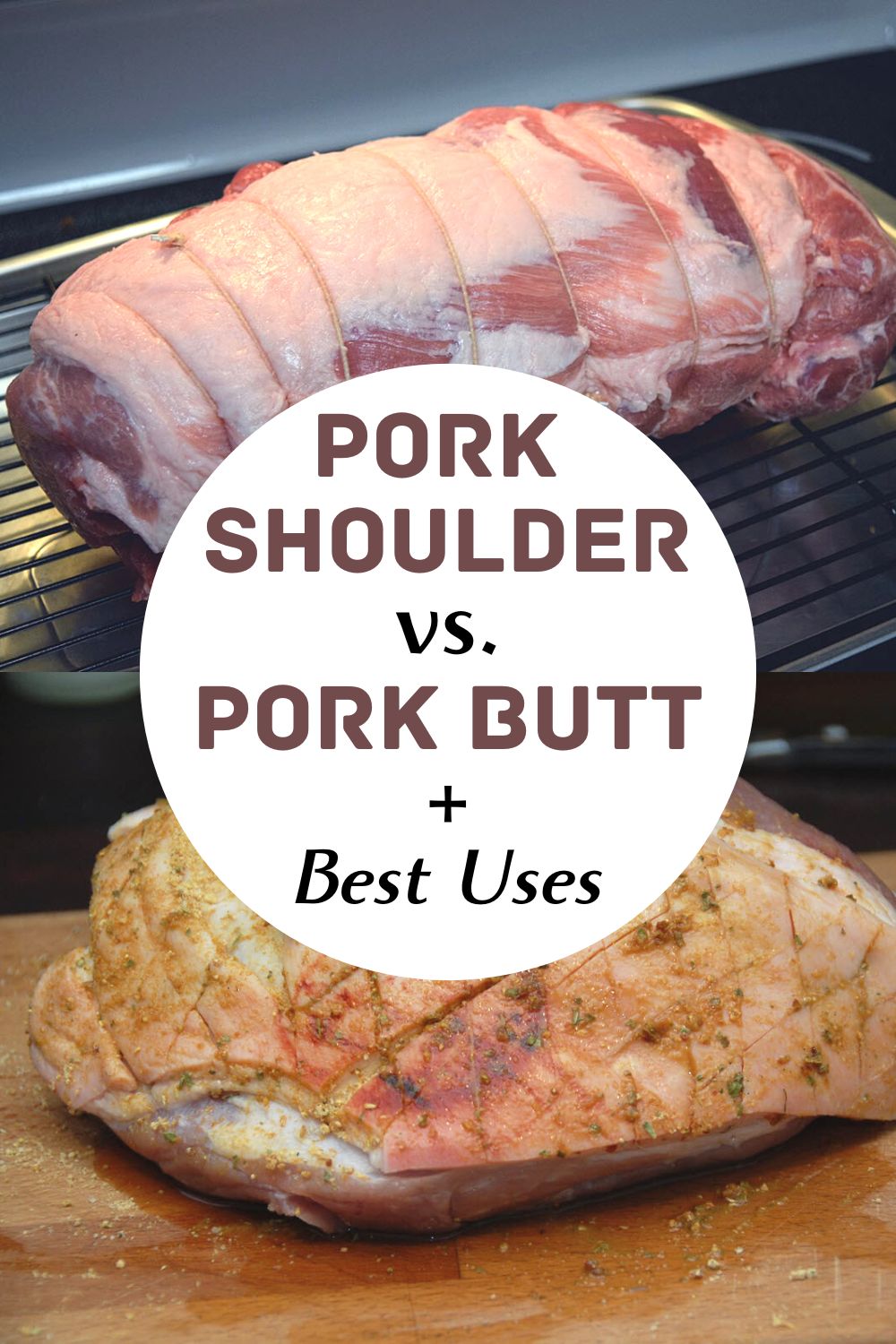



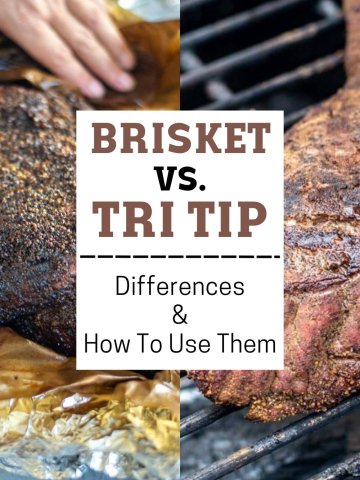
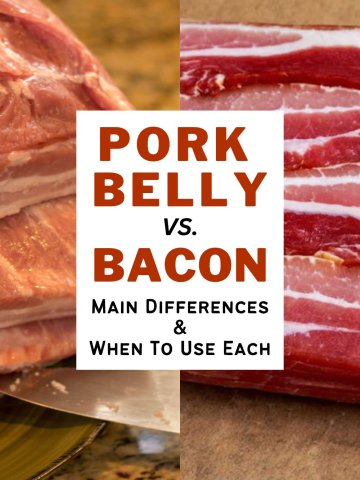
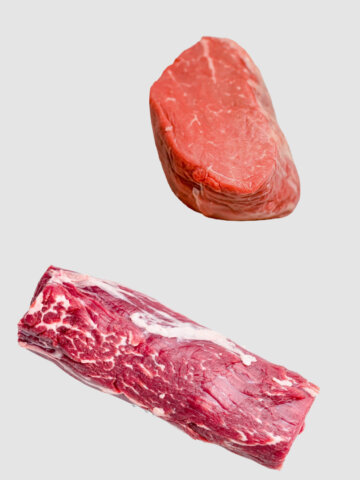
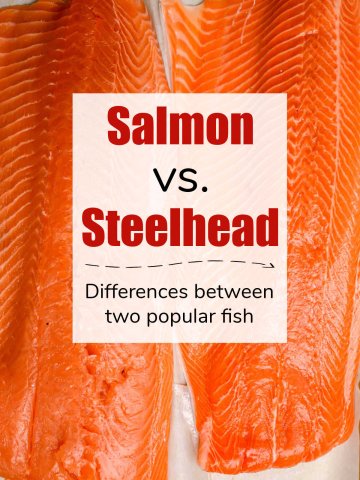
Leave a Reply